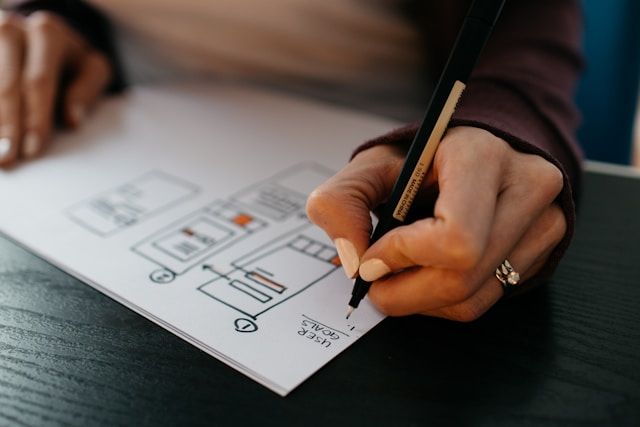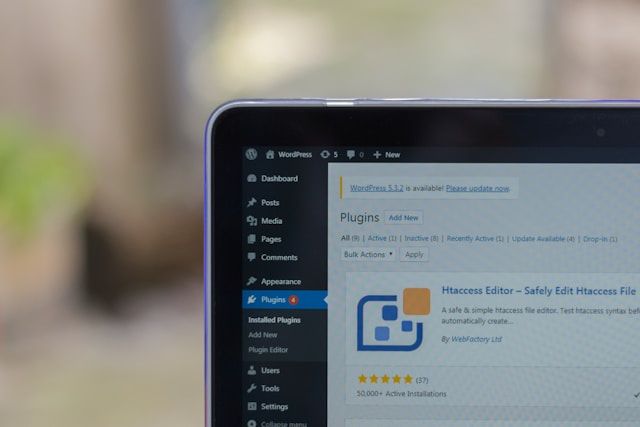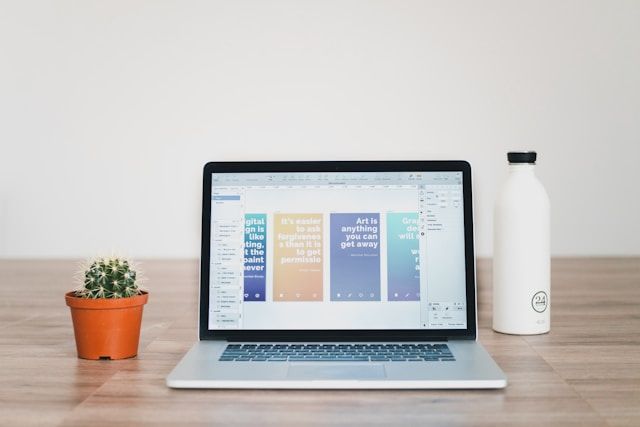Take, for example, the internet – the world of millions of web sites and blogs, and here the design of the site can decide whether the visitor has only looked at the page for several seconds or is now a captivated user? What do you think causes certain websites to appear inviting, elicit clicks and cause users to explore and interact compared to others which can be a task just to use and move around on?
This can be found in what I like to refer to as the Interactive Design. That’s not just ‘winging it’ – it is an actual strategy that, if employed correctly, will revolutionalise the way users experience your website and lead to better satisfaction, engagement and results.
What is Interactive Design?
Before diving into the benefits, let’s clarify what Interactive Design actually means. At its core, Interactive Design is a design approach that focuses on creating interfaces that respond to the actions of users.
It’s about making the experience of using a website feel more like a conversation than a one-way street. This can be achieved through various means, such as animations, dynamic content, feedback loops, and other interactive elements that respond to user inputs in real time.
Interactive Design goes beyond aesthetics—it’s about functionality and user experience. When done right, it can make your website feel alive, intuitive, and even fun to use. But why is this important? Why should you invest time and resources into making your website interactive?
Enhanced User Engagement
One of the most significant benefits of Interactive Designs is increased user engagement. When a website feels static and unresponsive, users are more likely to lose interest quickly.
However, when a website is interactive, it invites users to explore, click, and engage with the content. This not only keeps users on your site longer but also encourages them to interact with various elements, such as forms, buttons, and multimedia.
For instance, think of a website that sells products. An interactive product configurator, where users can customize their purchases in real-time, creates a sense of ownership and personalization. This kind of engagement is far more likely to lead to a conversion than a simple, static product page.
Improved User Experience
User experience (UX) is at the heart of any successful website, and Interactive Design plays a crucial role in enhancing UX. When users feel that a website is easy to navigate and responsive to their needs, their overall experience improves. This, in turn, can lead to higher satisfaction, repeat visits, and positive word-of-mouth.
Interactive elements, such as hover effects, animated transitions, and real-time feedback, can make your website feel more intuitive.
These small touches may seem insignificant, but they add up to create a seamless and enjoyable experience for the user. For example, a form that provides instant validation as the user types is far more user-friendly than one that requires a page reload to show errors.
Emotional Connection and Brand Loyalty
In a world where consumers have countless choices at their fingertips, creating an emotional connection with your audience is more important than ever. Interactive Design can help foster this connection by making your website feel more human and relatable.
When users interact with a website that feels responsive and alive, they are more likely to form a positive emotional response.
This could be as simple as a playful animation that brings a smile to their face, or a more complex interaction that feels personalized to their needs. Over time, these positive interactions can build brand loyalty, as users begin to associate your brand with a pleasant and engaging experience.
Better Data Collection and Analysis
Another often overlooked benefit of Interactive Design is its ability to facilitate better data collection and analysis. When users interact with your website, they leave behind valuable data that can help you understand their behavior, preferences, and pain points. This data can be used to make informed decisions about future design and content strategies.
For example, by analyzing how users interact with different elements on your site, you can identify which features are most popular and which may need improvement. This insight can help you refine your design to better meet the needs of your audience, ultimately leading to a more successful website.
Increased Conversions and ROI
At the end of the day, the goal of any website is to achieve conversions, whether that means making a sale, capturing a lead, or getting a signup. Interactive Design can play a significant role in boosting conversions by making it easier and more enjoyable for users to take the desired action.
Consider a website that uses an interactive pricing calculator. Instead of presenting users with a static list of prices, the calculator allows them to input their needs and preferences, instantly showing them a customized quote. This not only provides value to the user but also increases the likelihood that they will convert, as they feel more in control of the process.
Furthermore, an interactive website often has a higher perceived value, which can justify higher prices and lead to a better return on investment (ROI). Users are more likely to spend money on a website that feels premium and well-designed, making Interactive Design a smart investment for businesses looking to maximize their online presence.
Accessibility and Inclusivity
Incorporating Interactive Design can also help make your website more accessible and inclusive. Interactive elements can be designed to accommodate users with different abilities, ensuring that everyone has a positive experience on your site.
For instance, adding keyboard navigation, voice controls, or customizable text sizes can make your website more user-friendly for individuals with disabilities.
Moreover, interactive features can be used to guide users who may be unfamiliar with the internet or technology. Simple, intuitive designs can help users navigate your site with ease, reducing frustration and making your content accessible to a broader audience.
Staying Competitive
Finally, in a rapidly evolving digital landscape, staying competitive is essential. Interactive Design is no longer just a nice-to-have; it’s a must-have for businesses looking to stand out from the crowd.
As more websites adopt interactive features, users are beginning to expect a higher level of interactivity and engagement. By investing in Interactive Design, you ensure that your website remains relevant and competitive in an increasingly crowded market.
Interactive Design is not just a buzz among web designers, but is actually an indispensible component of web designs that you can significantly influence the success of your website. User satisfaction and engagement ? Innovative and aesthetics experience ? Appeal to emotions ? Higher conversion rates and sale ? These are just some of the advantages of Interactive Design.
When planning your website in the future, plan how it is going to have some form of interactivity to enhance the users’ experience. Interactive Design can be applied in simple animations or use of dynamic content or real time feedbacks and therefore can be applied in enhancing the functionality of a website for the benefits of all site users.





